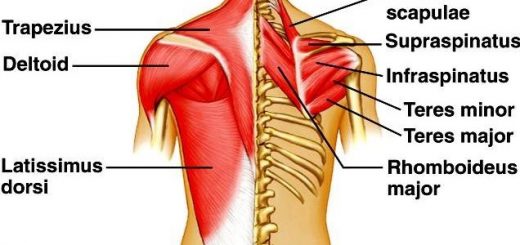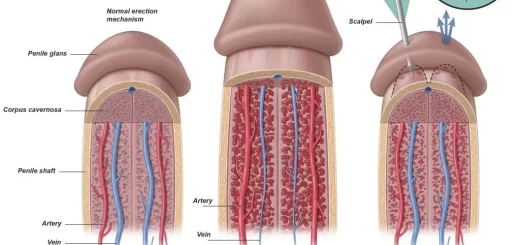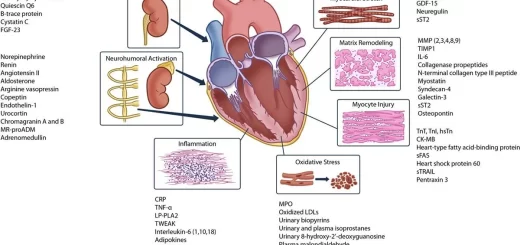Blood vessels of forearm and hand, Veins and Lymphatics of the upper limb
The vessels which supply the wrist and hand are the ulnar and radial arteries. The blood supply to the deep flexor and extensor muscles of the forearm is supplied via the ulnar artery that divides into anterior and posterior interosseous arteries, On the dorsal side of the wrist, there is another merger of these arteries that of which forms the carpal arch; the branches from the carpal arch run distally along with the metacarpal bones.
Radial artery
The radial artery starts as one of the 2 terminal branches of the brachial artery (the smaller) opposite to the neck of the radius.
Course
- It descends in the forearm.
- Passes on the anterior aspect of the radius, deep to the brachioradialis.
- It becomes superficial at the wrist where its pulsation can be felt lateral to the tendon of flexor carpi radialis muscle.
- The radial artery reaches the anatomical snuff box, where it lies on the scaphoid bone (here also pulsation of radial artery can be felt in the anatomical snuffbox).
- The radial artery passes between the 2 heads of the first dorsal interosseous muscle then between the 2 heads of adductor pollicis to reach the palm where it continues as a deep palmar arch.
Branches of the radial artery
- Radial recurrent branch in cubital fossa: it ascends anterior to lateral epicondyle to anastomose with the anterior division of profunda brachii.
- Muscular branches.
- Nutrient artery to the radius.
- Anterior and posterior carpal branches share in the formation of anterior and posterior carpal arches.
- Superficial palmar branch.
- Deep palmar arch: lies 3 cm proximal to Superficial palmar arch. it is formed mainly by the radial artery, completed by a deep branch of the ulnar artery. It gives palmar meta-carpal arteries.
- The first dorsal metacarpal branch divides into two branches; one for adjacent sides of thumb and index finger, and one for the lateral side of the thumb.
- Radialis indices for the lateral side of the index.
- Princeps pollicis for the two sides of the thumb.
The ulnar artery
The ulnar artery starts as one of two terminal branches of the brachial artery opposite to the neck of the radius. It is larger than the radial artery.
Course
- It descends in the forearm lateral to ulnar nerve lying deep to flexor carpi ulnaris, between it and flexor digitorum profundus.
- It enters the hand superficial to the flexor retinaculum and continues as a superficial palmar arch.
Branches of the ulnar artery
1. Anterior and posterior ulnar recurrent: ascend respectively anterior and posterior to the medial epicondyle, to share in the anastomosis around the elbow joint.
2. Common interosseous: arises from the ulnar artery close to its origin. It Divides into:
- Anterior interosseous artery: descends anterior to the interosseous membrane.
- Posterior interosseous artery: descends posterior to the interosseous membrane. It gives the interosseous recurrent artery that shares in anastomosis around the elbow.
3. Muscular branches.
4. Nutrient artery to ulna.
5. Anterior and posterior carpal branches: share in the formation of anterior and posterior carpal arches.
6. Superficial palmar arch: It lies deep to palmar aponeurosis, at the level of the distal border of fully extended thumb. It is formed mainly from the ulnar artery and completed by the superficial palmar branch of the radial artery. It gives 4 digital arteries.
7. Deep palmar branch.
Anastomosis and veins of the upper limb
Anastomosis around the scapula:
This anastomosis is formed between the following three arteries:
- Supra-scapular artery (which is a branch from the thyrocervical trunk from the first part subclavian artery).
- Descending scapular or the deep branch of the transverse cervical artery (which is a branch from the thyrocervical trunk from the first part subclavian artery).
- Suprascapular artery (which is a branch from the third part axillary artery).
This anastomosis forms an important indirect connection between the first part subclavian artery and the third part axillary artery. Thus in case of obstruction of the artery between these two regions the blood can still pass to the rest of the upper limb.
Anastomosis around the surgical neck of the humerus
It is an anastomosis between:
- Anterior circumflex humeral artery of the 3rd part of the axillary artery.
- Posterior circumflex humeral artery of the 3rd part of the axillary artery.
- A deltoid branch of the thoracoacromial artery of the 2nd part of the axillary artery.
- Ascending branch of profunda brachii of the brachial artery.
If the axillary artery is ligated distal to the humeral and subscapular branches, the blood flow in the limb is re-established through an anastomosis between these branches and the profunda brachii.
Anastomosis around the elbow
It is the set of anastomosis around the elbow joint between the branches of the brachial artery (above) and branches of the ulnar and radial arteries (below). This set helps to maintain a collateral circulation in case of obstruction of one or more of these arteries.
This anastomosis takes place as follows:
- In front of the lateral epicondyle: between the anterior descending of profunda brachii and the radial recurrent artery.
- Behind the lateral epicondyle: between the posterior descending branch of profunda brachii and the interosseous recurrent artery.
- In front of the medial epicondyle: between the anterior branch of the inferior ulnar collateral artery and the anterior ulnar recurrent artery.
- Behind the medial epicondyle: between the superior ulnar collateral artery & posterior branch of the inferior ulnar collateral artery (from above) and the posterior ulnar recurrent artery (from below).
- If ligation of the brachial artery is distal to the profunda brachii and the superior ulnar collateral arteries, these vessels will establish circulation distally, with the inferior ulnar collateral, radial, ulnar, and interosseous recurrent arteries.
Anastomosis between radial and ulnar arteries in hand:
- Anterior and posterior carpal arches: on the front and back of the wrist by means of anterior and posterior carpal branches of radial and ulnar arteries.
- Superficial and deep palmar arches in the hand.
Veins of upper limb
These veins are composed of superficial and deep veins.
I. Superficial venous system of upper limb begins as:
- Palmar and dorsal digital veins on respective surfaces of the digits: These veins join to form dorsal metacarpal veins, which anastomose to form the dorsal venous arch.
- Cephalic vein: is the lateral continuation of the dorsal venous arch. It ascends along the radial side of the forearm to the cubital fossa. It passes in the deltopectoral groove. It terminates by piercing the clavipectoral fascia to drain into the axillary vein.
- The basilic vein is the medial continuation of the dorsal venous arch: It ascends on the ulnar side of the forearm, receiving tributaries from both surfaces. In the arm, it pierces the deep fascia and unites with brachial veins (venae comitantes of the brachial artery) to form the axillary vein.
- The median cubital vein, in cubital fossa: This vein passes obliquely across the fossa connecting the cephalic and basilic vein. The median cubital is the vein most commonly used for venipuncture (intravenous injection).
II. Deep venous drainage of upper limp
- It consists of veins accompanying the arteries.
- The radial, ulnar, and brachial arteries have veins accompanying them called ”venae comitantes”. Each artery is accompanied by 2 venae comitantes.
- The veins accompanying the radial and ulnar arteries join together forming venae comitantes of the brachial artery, which unite with the basilic vein to form the axillary vein.
Lymphatics of the upper limb
The lymphatics of the upper limb are classified into two main groups:
Superficial lymphatics
- Lymphatics from the middle, ring, and little fingers, and from the medial part of the hand follow the basilic vein. They terminate into the supra-trochlear lymph nodes, then into the lateral brachial lymph nodes, and finally into the apical group of the axillary lymph nodes.
- Lymphatics from the thumb, index, and lateral part of the hand follow the cephalic vein. They pass through the ”delto-pectoral groove” and pierce the ”clavipectoral fascia” to terminate into the apical group of the axillary lymph nodes.
Deep lymphatics
They are few. They ascend along the main blood vessels of the upper limb to terminate into the lateral (brachial) group of the axillary lymph nodes. The axillary lymph nodes are subdivided into five groups: anterior, posterior, lateral, central, and apical.
From this group arises the subclavian lymph trunk. The right subclavian lymph trunk drains into the ”right lymphatic duct”. The left subclavian lymph trunk drains into the ”thoracic duct”.
Nerves of forearm and hand, Nerve injuries types & causes
Hands structure, function, bones, nerves, muscles & anatomy
Forearm bones, anatomy, function & Skeleton of the hand
Flexors of forearm, Forearm muscles, structure, function & anatomy
Arm structure, compartments, muscles, anatomy & Cubital Fossa contents



